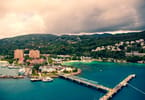It’s no wonder people thought Mount St. Helens would be a money machine.
In the weeks before the 1980 eruption, as the mountain let loose with preparatory bursts of ash and steam, thousands of tourists converged on southwestern Washington, desperate to see an honest-to-goodness volcano in action.
They sneaked around roadblocks into the hazardous “Red Zone.”They tramped through ash-blackened snow to the summit, tying T-shirts around their heads in order to breathe.
They pitched tents as close to the mountain as they could, some blithely bringing toddlers with them.
Before the spectacular and deadly sideways blast, 30 years ago on May 18, an estimated 1,500 people from throughout the United States, Canada and Europe had created impromptu campgrounds on the boundaries of the Red Zone, cheering as ash billowed above them.
The urge to get close to the volcano was so strong, Gov. Dixy Lee Ray called out the National Guard to patrol roadblocks with M-16 rifles.
Fascination with the volcano continues to this day, and the mountain has obligingly let loose with smaller eruptions every few years, maintaining the intrigue. On average, the volcano and the surrounding Mount St. Helens National Volcanic Monument get about 750,000 visitors a year.
But, try as they might, entrepreneurs in communities surrounding the mountain have never been able to turn the fascination into serious money.
For 30 years, their target has been the U.S. Forest Service, which manages the 110,000-acre monument and has the job of balancing the demands of various interest groups.
The controversy basically is over how to strike the balance between preservation and use.
Scientists and conservationists, who regard the volcano as a natural laboratory, want nature left alone. Tourism interests want more roads, campgrounds, hotels, restaurants, more organized activities and — most of all — more access into areas set off for scientific research.
This year, complaints reached a crescendo, with a rising chorus of voices — including that of U.S. Sen. Maria Cantwell, D-Wash. — calling for the Forest Service to turn the monument over to the U.S. Park Service.
“The Forest Service has good people, but they’re not the best agency to manage this type of facility,”said Mark Plotkin, the director of tourism for Cowlitz County.
“At Mount Rainier, they have things that go on all day,”Plotkin said, “whether it’s campfire talks, hikes, wilderness viewing. There’s a whole chalkboard of activities all day long.”
Funding dwindles
A flood of federal dollars followed the 1980 eruption, paying for new roads, parking lots, bridges, trails and three visitor centers at Mount St. Helens along one 60-mile stretch of road.
The federal government spent $1.4 billion turning the volcano from disaster zone into tourist center in the early years, including $12.7 million on a bridge along the main tourist highway.
But the flood of money quickly dwindled to a trickle, even before the recent recession.
The budget dropped steadily from 1997 to 2007, declining from $3 million to a current plateau of about $1.7 million. (By way of comparison, Mount Rainier National Park’s current annual budget is $12.3 million.)
In recent years, monument managers have had to lay off 20 of 45 full-time employees; they’ve reduced hours, stopped plowing access roads in the winter and postponed maintenance of roads and trails.
Volunteers run most of the interpretive programs; they also work on trails and run the monument’s popular climbing program.
“The difficulty was in getting operations and maintenance money once the shiny new buildings were opened and the ribbon-cutting was over,”said conservationist Susan Saul. “That depends on appropriations.”
Saul has been fighting to preserve Mount St. Helens since the 1970s, back when the greatest threat was timber companies clear-cutting their way up the mountain’s flanks, helped by the Forest Service.
Saul isn’t sold on the idea of the Park Service taking over the monument. What needs to be fixed, she says, is how the Forest Service allocates money.
National parks are funded individually in the U.S. Department of the Interior budget, Saul pointed out. With the Forest Service, the welfare of the monument depends on other needs elsewhere within Gifford Pinchot National Forest.
Some of Mount St. Helens’ money problems have recently been alleviated, particularly by the $6.5 million in federal Recovery Act stimulus funds it received. The money is being used for new interpretive signs, trail maintenance, a new outdoor theater, and a backlog of unattended maintenance.
WHAT TO TAKE AWAY FROM THIS ARTICLE:
- In the weeks before the 1980 eruption, as the mountain let loose with preparatory bursts of ash and steam, thousands of tourists converged on southwestern Washington, desperate to see an honest-to-goodness volcano in action.
- Before the spectacular and deadly sideways blast, 30 years ago on May 18, an estimated 1,500 people from throughout the United States, Canada and Europe had created impromptu campgrounds on the boundaries of the Red Zone, cheering as ash billowed above them.
- — calling for the Forest Service to turn the monument over to the U.






















